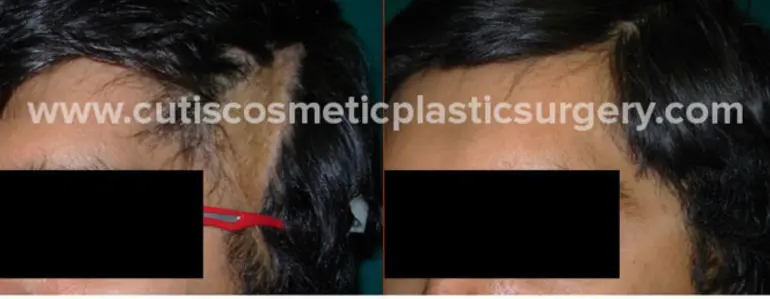Baldness often stems from more than just natural hair loss; injuries to the scalp are a frequent and significant cause. Such injuries can destroy hair follicles, leaving areas permanently bald even after the skin heals. These injuries might arise from various sources, including accidents, burns, sports, industrial mishaps, or even childhood incidents. Diseases and infections, alongside post-surgical scars from procedures like neurosurgery, can also lead to significant hair loss.
Minor scalp scars typically don't pose cosmetic issues and can be easily camouflaged with simple hairstyling adjustments. However, large or prominently visible scars can severely impact one’s appearance, self-esteem, and overall personality. In such cases, hair transplant surgery emerges as the most effective and scientifically supported option.
Why Hair Transplant on Scarred Scalp is Challenging
Performing a hair transplant on scarred areas is more complex than treating typical baldness. It demands a thorough examination of both the scarred region and the entire scalp. Experienced cosmetic surgeons must consider multiple factors, including any underlying chronic diseases affecting the scalp, the blood supply to the scarred area, the thickness of the scalp where the hair transplant will occur, and the direction of normal hair growth.
Before proceeding with surgery, all necessary tests and physical examinations must be conducted to ensure the viability of a successful hair transplant. This meticulous planning can lead to excellent outcomes, allowing patients to regain a youthful appearance and boost their self-confidence.
An Illustrative Case: Restoring Hair on Scarred Scalp
One illustrative case involved a patient who developed significant baldness following a scalp injury. The size and visibility of the scar made it impossible to conceal with surrounding hair. Therefore, a hair transplant was deemed necessary. The surgery was executed with careful planning and precision, utilizing a Zeiss 4x loupe for magnification to ensure the placement of each follicle for a natural look.
The post-operative results were remarkable, showing the previously bald area now fully covered, seamlessly blending with the natural hair. This case underscored the transformative impact of well-executed hair transplant surgery on restoring not just hair but also a person’s self-image.
Conclusion
Scalp injuries can lead to permanent hair loss, creating significant challenges for individuals affected. Hair transplant surgery offers a sophisticated solution to this problem, restoring not only hair but also confidence and self-esteem. Through meticulous planning and advanced surgical techniques, even extensively scarred areas can be effectively treated, giving patients back their natural hair appearance and helping them overcome the psychological impact of visible scarring.

 4 March 2013
4 March 2013 PLASTIC SURGERY
PLASTIC SURGERY 0 Comments
0 Comments
